Topics
Black Burial Grounds: Beacon
The Walter M. Patrice online library is a living, growing resource. Please encourage further work in studies of the local men, women and children of African descent.
Posted in: African Heritage, For everyone
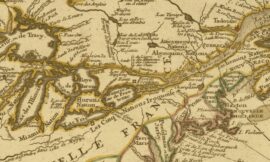
Sophia Pooley: In Her Own Words
Benjamin Drew published the book, The Refugee: or the Narratives of the Fugitive Slaves in Canada in 1856, capturing narratives of freedomseekers in first person testimony. Among the narratives is that of Sophia Pooley, who was born and raised ten miles south of Poughkeepsie in Fishkill. At the age of seven she was sold into slavery in Canada, this would have been around 1769. She is 90 years old when telling her story. We are grateful to Bard College Professor Christian Crouch for directing us to this material. Recommended Reading: Verbatim from the book: Sophia Pooley. I was born in Fishkill, New York State, twelve miles from North River. My father’s name was Oliver Burthen, my mother’s Dinah. I am now more than ninety years old. I was stolen from my parents when I was seven years old and brought to Canada; that was long before the American Revolution. There were hardly any white people in Canada then–nothing here but Indians and wild beasts. Many a deer I have helped catch on the lakes in a canoe: one year we took ninety. I was a woman grown when the first governor of Canada came from England: that was Gov. Simcoe. My parents were slaves in New York State. My master’s sons-in-law, Daniel Outwaters and Simon Knox, came into the garden where my sister and I were playing among the currant bushes, tied their handkerchiefs over our mouths, carried us to a vessel, put us in the hold, and sailed up the river. I know not how far nor how long–it was dark there all the time. Then we came by land. I remember when we came to Genesee,–there were Indian settlements there,–Onondagas, Senecas, and Oneidas. I guess I was the first colored girl brought into Canada. The white men sold us at Niagara to old Indian Brant, the king. I lived with old Brant about twelve or thirteen years as nigh as I can tell. Brant lived part of the time at Mohawk, part at Ancaster, part at Preston, then called Lower Block: the Upper Block was at Snyder’s Mills. While I lived with old Brant we caught the deer. It was at Dundas at the outlet. We would let the hounds loose, and when we heard them bark we would run for the canoe–Peggy, and Mary, and Katy, Brant’s daughters and I. Brant’s sons, Joseph and Jacob, would wait on the shore to kill the deer when we fetched him in. I had a tomahawk, and would hit the deer on the head–then the squaws would take it by the horns and paddle ashore. The boys would bleed and skin the deer and take the meat to the house. Sometimes white people in the neighborhood, John Chisholm and Bill Chisholm, would come and say ‘t was their hounds, and they must have the meat. But we would not give it up. Canada was then filling up with white people. And after Brant went to England, and kissed the queen’s hand, he was made a colonel. Then there began to be laws in Canada. Brant was only half Indian: his mother was a squaw–I saw her when I came to this country. She was an old body; her hair was quite white. Brant was a good looking man–quite portly. He was as big as Jim Douglass who lived here in the bush, and weighed two hundred pounds. He lived in an Indian village–white men came among them and they intermarried. They had an English schoolmaster, an English preacher, and an English blacksmith. When Brant went among the English, he wore the English dress–when he was among the Indians, he wore the Indian dress,–broadcloth leggings, blanket, moccasins, fur cap. He had his ears slit with a long loop at the edge, and in these he hung long silver ornaments. He wore a silver half-moon on his breast with the king’s name on it, and broad silver bracelets on his arms. He never would paint, but his people painted a great deal. Brant was always for making peace among his people; that was the reason of his going about so much. I used to talk Indian better than I could English. I have forgotten some of it–there are none to talk it with now. Brant’s third wife, my mistress, was a barbarous creature. She could talk English, but she would not. She would tell me in Indian to do things, and then hit me with any thing that came to hand, because I did not understand her. I have a scar on my head from a wound she gave me with a hatchet; and this long scar over my eye, is where she cut me with a knife. The skin dropped over my eye; a white woman bound it up. [The scars spoken of were quite perceptible, but the writer saw many worse looking cicatrices of wounds not inflicted by Indian savages, but by civilized (?) men.] Brant was very angry, when he came home, at what she had done, and punished her as if she had been a child. Said he, “you know I adopted her as one of the family, and now you are trying to put all the work on her.” I liked the Indians pretty well in their place; some of them were very savage,–some friendly. I have seen them have the war-dance–in a ring with only a cloth about them, and painted up. They did not look ridiculous–they looked savage,–enough to frighten anybody. One would take a bowl and rub the edge with a knotted stick: then they would raise their tomahawks and whoop. Brant had two colored men for slaves: one of them was the father of John Patten, who lives over yonder, the other called himself Simon Ganseville. There was but one other Indian that I knew, who owned a slave. I had no care to get my freedom. At twelve years old, I was sold by Brant to an Englishman in Ancaster, for one hundred
Posted in: African Heritage, For everyone
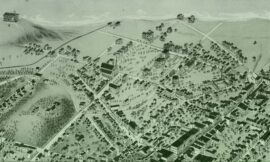
Caroline Clowes & the City of Schools: How Poughkeepsie Nurtured an Artist
With Bill Jeffway & Melodye Moore This program is part of the exhibition, Fertile Ground: the Hudson Valley Animal Paintings of Caroline Clowes. Below: Click on Watch on YouTube to open a new window & to view full screen. Click on the red play button in the middle to view within existing window. The generous support of our Program sponsor, Hudson Views, and Virtual Event Space sponsor, N&S Supply, allows us to bring programs such as this to the public at no cost to the viewer. Other Programs Related to the Fertile Ground: the Hudson Valley Animal Paintings of Caroline Clowes Painting in a Challenging Landscape: Women Artists in the 19th Century Drawn to Nature: The Sketches and Studies of Caroline Clowes
Posted in: Clowes
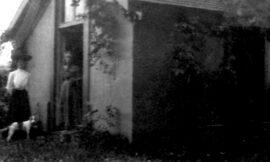
Painting in a Challenging Landscape: Women Artists in the 19th Century
With Rob Doyle This program is part of the exhibition, Fertile Ground: the Hudson Valley Animal Paintings of Caroline Clowes. Below: Click on Watch on YouTube to open a new window & to view full screen. Click on the red play button in the middle to view within the existing window. The generous support of our Program sponsor, Hudson Views, and Virtual Event Space sponsor, N&S Supply, allows us to bring programs such as this to the public at no cost to the viewer. Artist Bios & Additional Information Sara Cole (1805-1857) Frances Fanny Flora Bond Palmer (1812-76) Eliza Pratt Greatorex (1820-97) Lilly Martin Spencer (1822-1902) Rosa Marie (Rosalie) Bonheur (1822-1899) Susan Catherine Waters (1823-1900) Sarah Anne Lillie Hardinge (1824-1913) Ellen Maria Carpenter (1830-1909) Charlotte Buell Coman (1833-1924) Fidelia Bridges (1834 – 1923)Laura Woodward (1834-1926) Julie Hart Beers (1835-1913) Miss Susie M. Barstow (1836-1923) Evelina (Nina) Mount (1837-1920) Mary Josephine Walters (1837-1883) Caroline Morgan Clowes (1838-1904) Virginia Wealthy Chandler (Titcomb) (1838-1912) Maria J.C. A’Becket (1839-1904) Miss Mary Kollock (1840-1911) Agnes C Way (1842 – 1943) Julia Cornelia Widgery Slaughter (1850-1905) Elizabeth Rebecca Coffin (1850-1930) Annie Cornelia Shaw (1852-1887) Bibliography American Women Artists, from Early Indian Times to the Present. Charlotte Streifer Rubinstein. 1982. Art Work, Women Artists and Democracy in Mid-Nineteenth-Century New York. April F. Masten. 2008 Fertile Ground. The Hudson Valley Animal Paintings of Caroline Clowes. Catalog. 2022. DCHSNY.org HOME ON THE HUDSON: Women & Men Painting Landscapes, 1825-1875. Catalog. 2009. Boscobel. Laura Woodward, The Artist Behind The Innovator Who Developed Palm Beach. Deborah C. Pollack. 2009. Nantucket Spirit, The Art & Life of Elizabeth R. Coffin. Margaret M. Booker. 2001. New Path, The. Ruskin and the American Pre-Raphaelites. Linda Ferber/William Gerdts. 1985. Brooklyn Museum Exhibit. Painting Professionals, Women Artists & The Development of Modern American Art, 1870-1930. Kirsten Swinth. 2001. Remember The Ladies, Women of the Hudson River School. Thomas Cole National Site Exhibit Catalog 2010. Restless Enterprise. The Art and Life of Eliza Pratt Greatorex. Katherine Manthorne. 2020. Women Artists, In All Ages And Countries. By Mrs. E. F. Ellet. 2016 Reprint of 1859 book. Women Artists of America, 1707-1964. Exhibition Catalog Newark Museum. April 2 – May 16, 1965
Posted in: For everyone, Women's History
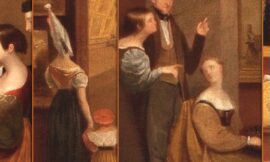
Women Artists in the 19th Century
Painting in a Challenging Landscape: Women Artists in the 19th Century A presentation by DCHS President Rob Doyle on December 5, 2022. This page is under construction. The video is incomplete and the listing of artists has barely begun. We appreciate your patience! This program is sponsored by Hudson Views,a longtime and generous supporter of DCHS. Sara Cole (1805-1857) Frances Fanny Flora Bond Palmer (1812-76) Eliza Pratt Greatorex (1820-97) Lilly Martin Spencer (1822-1902) Rosa Marie (Rosalie) Bonheur (1822-1899) UNDER CONSTRUCTION
Posted in: Women's History
Dutchess County’s Knickerbocker Trail
For a very long time, since 1809 to be precise, the best-known Knickerbockers have been the fictional characters depicted by the author Washington Irving in a satirical history of New York. His work spawned the use of the iconic name to mean a “real” New Yorker, the Dutch focus reflecting the fact that the first European settlers in New York were Dutch. The popularity of Irving’s work led to the popular depiction of the “Father Knickerbocker ” character, with a three pointed hat and knickerbockers, the pants that go just below the knee and socks take care of the rest. The name lives on popularly today in the basketball team, the New York Knicks, among others. Bryan Knickerbocker lives outside of Philadelphia, and has been studying his family history for decades. DCHS is pleased to be publishing Bryan’s findings in a less traditional way, through the serial publication of chapters that will illuminate points along a trail in northern and central Dutchess County. That evolving trail can be found at www.dchsny.org/knickerbocker-trail. Among the most extraordinary findings, 90% of the Knickerbocker’s in the United States are descendants of these northern Dutchess Knickerbockeers. Subsequent chapters will be told and assigned their place on the Knicerkbocker trail! Bill Jeffway To best view the trail, align your mouse over the trail window (middle) and scroll up and down. To adjust the position of the window, align your mouse to the left or right edges and scroll up or down.
Posted in: For everyone, Towns, Trails

Civil War Highlights
Above: early assembly of men volunteering for service in Poughkeepsie in 1861 when the war commenced. The Civil War is a topic that holds a great deal of interest among many people. Although, with the exception of the battle at Gettysburg, much of the fighting took place in the U.S. south, two percent of the US population died from combat or disease or war-related injuries, that is the equivalent of seven million people today. The Civil War had a profound and lasting impact locally. Men fought in different regiments, but the 150th NY Volunteers was known as the Dutchess County Regiment, and the 128th Regiment has a large composition of county men. Women organized aid societies and served at the battlefied as nurses and aids. Programs: DCHS Trustee, Dr. Michael Boden is an expert on the Civil War and his series of programs supported by CR Properties is popular. Collections: the highlight has to be the draft wheel used in Poughkeepsie in the 1863 draft. The Titus Papers and Dean Thomas Collection highlight the 150th and 128th respectively. Two consecutive DCHS Yearbooks were dedicated to the topic.
Posted in: For everyone, Topics
Black History Featured Collections
Highlights People 1941 VOICES Interviews of Manet Fowler Places AME Zion Church The Walter M. Patrice Collection Things Freedom For Sale Man purchases own freedom Words from the past Newer Perspectives Other Starting Points The Walter M. Patrice Collection focuses largely on the history of the Smith AME Zion Church in Poughkeepsie, which through Mr. Patrice’s efforts was listed on the national historic register. Although unable to part with the photo album, Mr. Patrice allowed DCHS to take photographs and use the images from his mother’s family’s photo album. In most cases, his mother was not able to identify specific individuals (aside from her father, Jasper Jackson) but she confirmed that it is the family album of Henry and Alma Jackson of the Town of Milan. Below right are some striking images by Reuben Van Vlack of men preparing to serve in World War One in 1918.
Posted in: African Heritage, For everyone
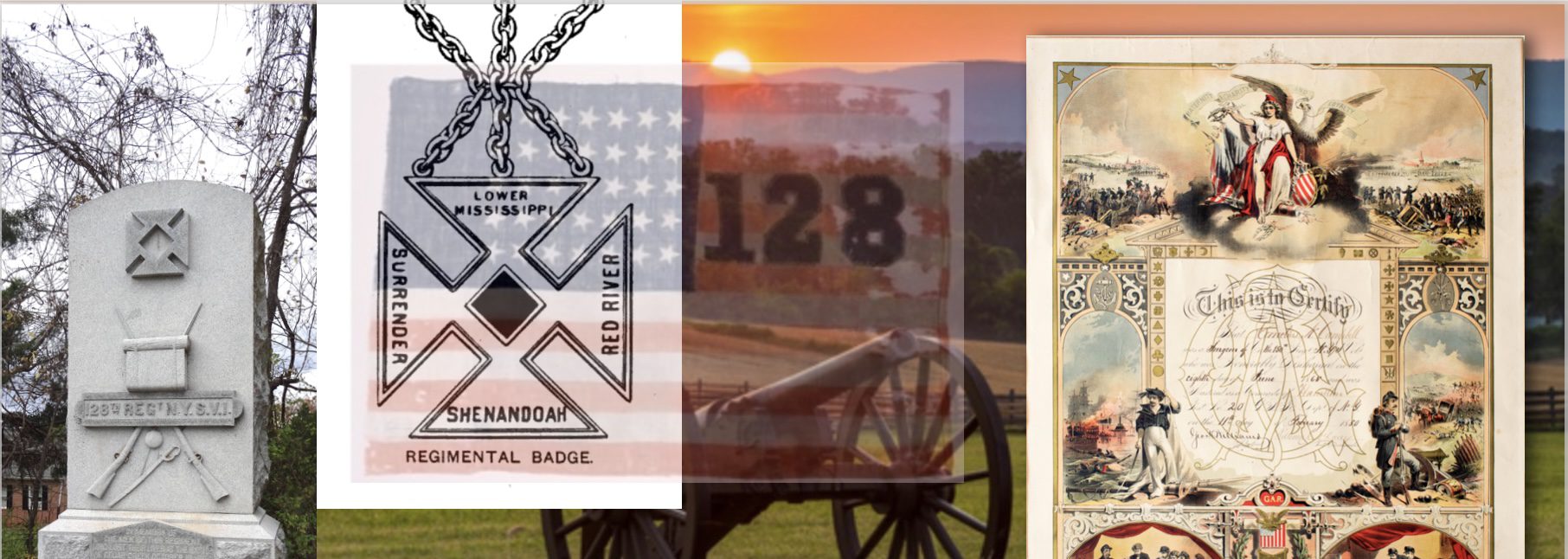
Dutchess County Soldiers in Shenandoah
DCHS Trustee and Dutchess Community College professor Dr. Michael Boden, himself a long-serving veteran is just back from the Shenandoah battlefield. As is his style, he takes moments of national importance and allows us to see and experience them through the eyes of the men, in this case, who would have been our friends and neighbors had we lived in Dutchess County over a century and a half ago. After you click on the video, for best viewing click on the Full screen icon at the bottom right of the video screen.
Posted in: For everyone, Veterans
